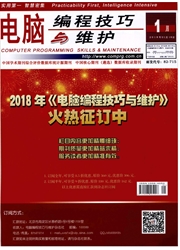

 中文摘要:
中文摘要:
为明确不同专用小麦植株干物质运转、籽粒灌浆特性对施氮水平的响应规律,以强筋小麦‘衡观35’和弱筋小麦‘扬麦15’为试验材料,在中国农业科学院武清野外试验站(N39°21′,E117°12′),设置0(N0)、180(N1)、300(N2)kg/hm^2 3个施氮水平,研究了两种小麦在孕穗期、开花期、完熟期地上部各部分器官物质运转及籽粒灌浆特性。结果表明:在一定范围内增施氮肥,对两种小麦地上部各部位器官干物质的积累均具有促进作用,且适量增施氮肥有益于小麦植株营养器官干物质转移量及转移率的提高;小麦籽粒干物质积累分为缓增期、快增期及稳定期,不同专用小麦在不同时期的灌浆速率有所差异,适量增施氮肥有利于籽粒最大灌浆速率的提高及灌浆末期灌浆速率的保持。综合分析,在本研究条件下,两种不同专用小麦的适宜施氮水平均为180 kg/hm^2。
 英文摘要:
英文摘要:
In order to clarify the responses of different wheat plant dry matter translocation and grain filling characteristics to nitrogen application levels, to study the aboveground organs matter translocation at booting stage, flowering stage and mature stage and the grain filling properties, a field experiment was carried out in the field monitoring station of Agro-Environmental Protection Institute under different nitrogen treatments, 0 (N0), 180 (N 1 ), 300 (N2) kg/hm^2. The wheat cultivar, strong gluten wheat 'Hengguan35' (HG35) and weak gluten wheat 'Yangmail5' (YM15) were selected for the study. The results indicate that the increase of nitrogen input within a certain extent could promote the different parts of organs dry matter accumulation of two kinds of wheat, and the increase of nitrogen input was beneficial to dry matter accumulation and improve the transfer rate of wheat plant nutrient organs; dry matter accumulation of wheat grain is divided into slow growth stage, rapid growth period and stable period, and different wheat differ in different periods of grain filling rate, increasing nitrogen input within a certain extent was beneficial to improve the maximum grain filling rate and maintain the filling rate in telophase of grain filling. Comprehensive analysis, under the conditions of this study, the suitable nitrogen application rate of two kinds of special use wheat was 180 kg/hm^2.
 同期刊论文项目
同期刊论文项目
 同项目期刊论文
同项目期刊论文
 期刊信息
期刊信息
